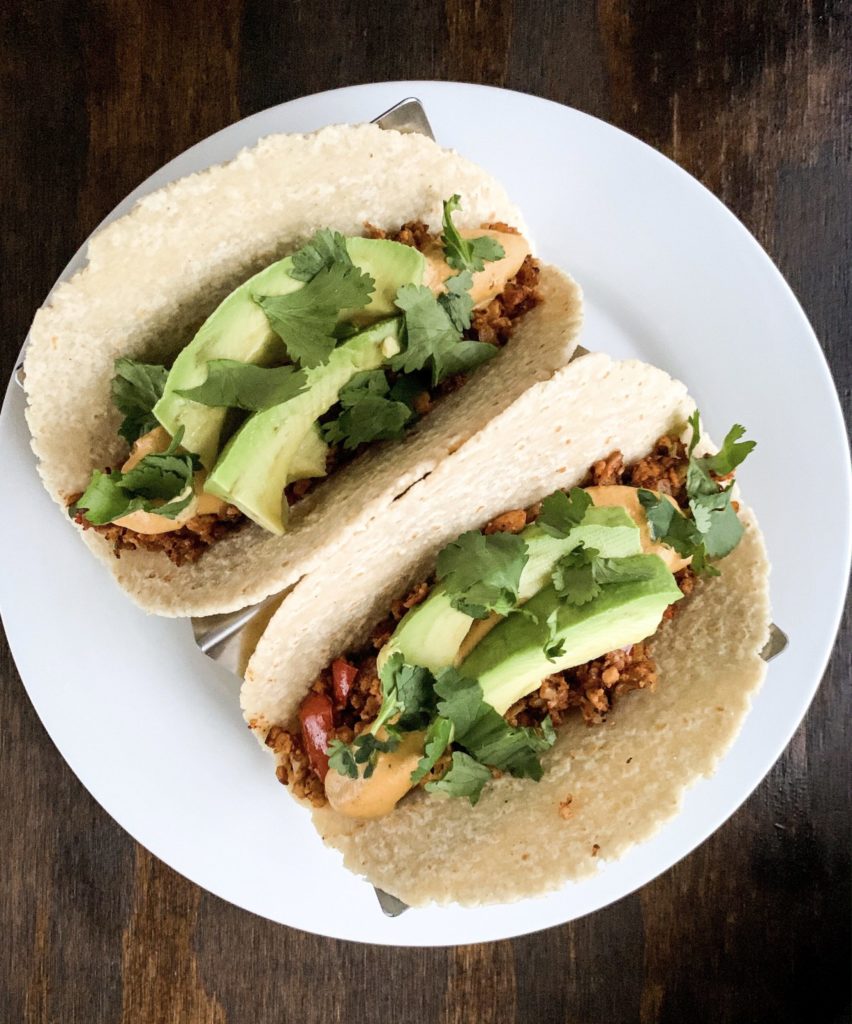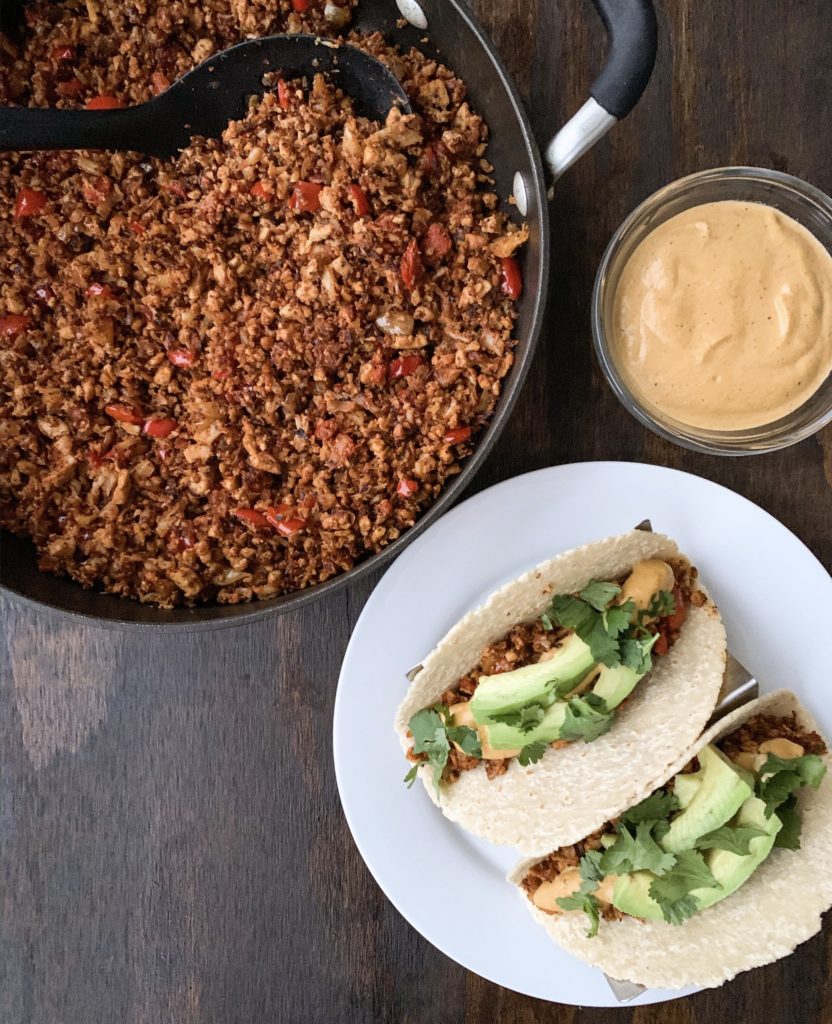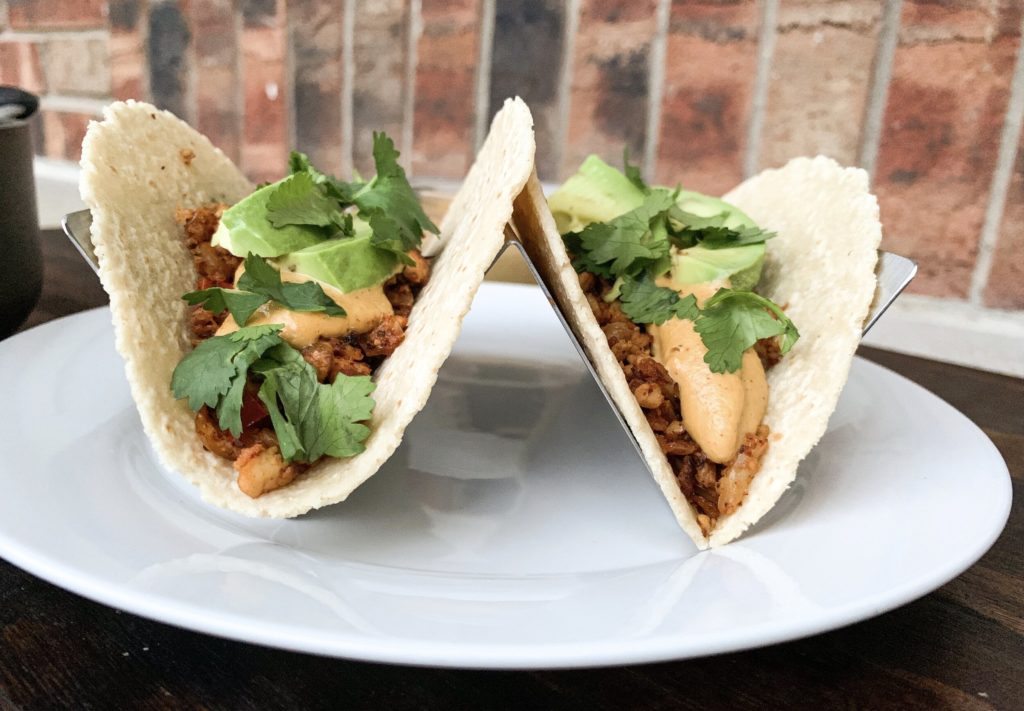Podcast Features
What do you want to learn more about?
Mentorship Program, 1:1 Nutrition Coaching with Alison
The Wholesome Journey - Group Nutrition Coaching Program
January 2, 2020
Alison Tierney, MS, RD, CD, CSO
Alison is a registered dietitian, board-certified in oncology nutrition, and a cancer thriver. Her expertise in oncology nutrition and personal experience with her own cancer diagnosis and its treatment provide her with the unique perspective of being able to relate to her clients on an entirely different level. Her content is consistently focused on evidence-based guidelines and seeks to increase the awareness of the power of nutrition to complement traditional cancer therapies.
- Alison Tierney, MS, RD, CD, CSOhttps://wholesomellc.com/author/alisonwholesomellc-com/
- Alison Tierney, MS, RD, CD, CSOhttps://wholesomellc.com/author/alisonwholesomellc-com/
- Alison Tierney, MS, RD, CD, CSOhttps://wholesomellc.com/author/alisonwholesomellc-com/
- Alison Tierney, MS, RD, CD, CSOhttps://wholesomellc.com/author/alisonwholesomellc-com/
The Best Way to Start Eating Tofu
I’m guessing I’m a lot like you when it comes to tofu.
You didn’t grow up eating it. You aren’t sure about it. And you don’t know how to cook with it.
Tofu always seemed kind of funny — especially to eat. And learning how to cook it in a way my family would love it was a little daunting.

Are we on the same page? Great — I thought we might be.
If we’re not on the same page and about to head to a new webpage because you aren’t open to adding tofu to your meals, hear me out. Yes, even if you are a breast cancer survivor or at high risk for breast cancer.
Did you know breast cancer patients who ate the most soy lived significantly longer and had a significantly lower risk of recurrence than those who ate less soy (1)? In fact, drinking just 1 cup of soy milk (or consuming the equivalent amount of phytoestrogens), may reduce the risk of breast cancer recurrence by 25% (2,3).
I went over the benefits of adding soy to one’s diet in this blog post. And even further in this Facebook Live.
The benefits of soy consumption go above and beyond breast cancer. Significant benefits have been found in association with prostate cancer (4), improving menopause-related hot flashes (5), reducing LDL (bad) cholesterol (6), and achieving a healthy weight (7).
After reviewing much of the research available on soy in the diet for disease protection and exploring tofu type dishes at several restaurants, I knew it was finally time to dive into figuring out how to cook it myself.
If I’m being honest, the first time I ever bought tofu it sat in my fridge with full intentions to cook with it. But the expiration date came and went it, then made its way to the garbage can.
These days, organic extra-firm tofu is essential in our fridge. My favorite thing to do with it?

Sofrita tacos!
If you’ve been to Chipotle and noticed the vegan option, sofritas, you are probably familiar. If not, think crumbled tofu with taco seasoning.
This is not a copycat version of Chipotle’s sofritas, but my own recipe that came to me using what I had in the fridge. It’s become a go-to meal in our house.
But I can’t forget the Vegan Queso. I’ve purchased a few different jars of vegan quesos before, but I was always disappointed in each new one I tried. So, one day I decided to try making it myself. I nailed it (at least in my husband and even my far from vegan brother’s opinions!) The recipe couldn’t be easier. I’ve used leftover queso for several dishes, not to mention, loaded vegan nachos!
Click here to grab my Vegan Queso Recipe!
Whether you’re a little nervous to start cooking with tofu or you’re a seasoned veteran, your family will be begging for these Sofrita Tacos (with Vegan Queso)!
Ready to dive in?
Sofrita Tacos
Makes approximately 8 tacos
Ingredients
sofrita ingredients
1, 16 ounce package organic, extra-firm tofu
1 medium onion, diced
1 red bell pepper, diced
½ head of cauliflower (about 3 cups), finely chopped*
3 cloves garlic, minced
2 tablespoons taco seasoning (see below recipe)**
2 tablespoons high-heat oil (e.g. avocado or culinary algae oil), optional
Salt and pepper, to taste
taco seasoning (makes about 3 tablespoons, you’ll use 2 tablespoons in this recipe)
1 tablespoon chili powder
1 teaspoon onion powder
1 teaspoon smoked paprika
1 teaspoon cumin
¾ teaspoon salt
¼ teaspoon black pepper
¼ teaspoon oregano
suggested additional taco ingredients
Avocado
Salsa
Lettuce
8 taco shells/tortillas
Directions
Start by opening the tofu package, draining the water, and pressing the tofu for about 15 minutes. Here is a video for a brief, simple technique for pressing tofu.
While your tofu is being pressed, dice your onion, pepper, cauliflower, and garlic. For the cauliflower, simply chop it finely or until reaching your desired size. It will almost look like little pieces of rice.
Heat a large skillet over medium-high heat. Once hot, add your onion, pepper, and cauliflower. Saute for about 7-8 minutes, until vegetables are tender and onions begin to caramelize. If the vegetables start to stick add water or vegetable broth 1 tablespoon at a time or add your high-heat oil here.
Add garlic and cook for about 1 minute.
When the tofu is pressed, dice the tofu into small pieces. Add the tofu to the skillet. Using a wooden spoon, or even an avocado masher, mince the tofu into small pieces (as if you were mincing ground beef). Continue until tofu is all relatively the same size.
Add 2 tablespoons of taco seasoning. Mix well.
Optional: Add your 2 tablespoons of high heat oil. Mix well.
Allow the mixture to cook and brown for another 5-10 minutes, depending on your desired doneness. (I intentionally have the tofu stick to the pan a little to brown the mixture–but not burn!)
Once reaching your desired doneness, taste the mixture. Season with salt, pepper, or more taco seasoning, as desired.
Serve with taco shells or tortillas and your favorite toppings — and especially our vegan queso!
Enjoy!
*You could also use a frozen bag of riced cauliflower!
**If you are pairing these tacos with our Vegan Queso, one batch of our taco seasoning will be just enough for both the sofritas and queso.

References:
-
Chi F, Wu R, Zeng YC, Xing R, Liu Y, Xu ZG. Post-diagnosis soy food intake and breast cancer survival: a meta-analysis of cohort studies. Asian Pac J Cancer Prev. 2013;14(4):2407-12.
-
Bhagwat, S., Haytowitz, DB, and Holden, JM. 2008. USDA Database for the Isoflavone Content of Selected Foods, Release 2.0. U.S. Department of Agriculture, Agricultural Research Service, Nutrient Data Laboratory Home Page: http://www.ars.usda.gov/nutrientdata/isoflav
-
Nechuta SJ, Caan BJ, Chen WY, et al. Soy food intake after diagnosed breast cancer and survival: an in-depth analysis of combined evidence from cohort studies of US and Chinese women. Am J Clin Nutr. 2012;96(1):123-32.
-
Pavese, J. M., Krishna, S. N., & Bergan, R. C. (2014). Genistein inhibits human prostate cancer cell detachment, invasion, and metastasis. The American Journal of Clinical Nutrition, 100(suppl_1). doi: 10.3945/ajcn.113.071290
-
Taku, K., Melby, M. K., Kronenberg, F., Kurzer, M. S., & Messina, M. (2012). Extracted or synthesized soybean isoflavones reduce menopausal hot flash frequency and severity. Menopause: The Journal of The North American Menopause Society, 19(7), 776–790. doi: 10.1097/gme.0b013e3182410159
-
Reynolds, K., Chin, A., Lees, K. A., Nguyen, A., Bujnowski, D., & He, J. (2006). A Meta-Analysis of the Effect of Soy Protein Supplementation on Serum Lipids. The American Journal of Cardiology, 98(5), 633–640. doi: 10.1016/j.amjcard.2006.03.042
-
Bertoia ML, Mukamal KJ, Cahill LE, et al. Changes in intake of fruits and vegetables and weight change in United States men and women followed for up to 24 years: analysis from three prospective cohort studies. PLoS Med. 2015;12(9):e1001878.
Sofrita Tacos & Vegan Queso
Wholesome LLC is not a medical practice, and its employees cannot offer medical advice. This website provides educational information but it is not a substitute for medical advice from a licensed medical professional who is familiar with your particular facts and circumstances. The information contained on this website is not intended to diagnose, treat, or cure any disease and shall not be construed as medical advice. The information and education on this website is provided for you to use at your own discretion.
You can further review our disclaimer here.
Wholesome
About Alison
Courses & Programs
The Wholesome Journey
Free Resources
FAQs
Press & Media
Recipes
Blog
Contact Us
Shop
© 2025 Wholesome, LLC All rights reserved.
Privacy Policy
Terms of Use
Disclaimer
Mobile Terms of Service